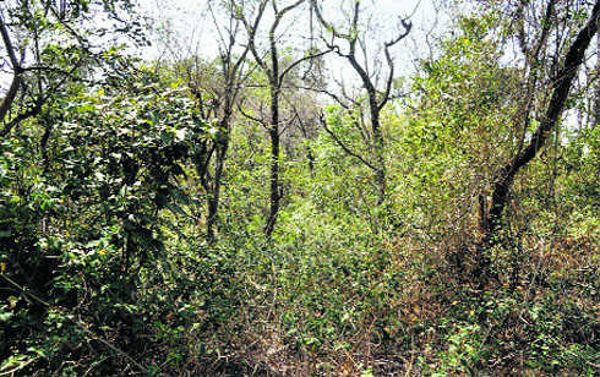In 5 years, Chandigarh diverted 1,000 sq m of forest land
Replies minister to a query during Budget Session in Lok Sabha
Chandigarh, July 22
Nearly 1,000 sq metres of forest land has been diverted for non-forestry purpose in the past five years in the city.
In response to a question raised in the ongoing Budget Session of the Lok Sabha on diversion of forest land for non-forestry purpose since 2019, Kirti Vardhan Singh, Minster of State for Environment, Forest and Climate Change, stated that 0.10 hectare of forest land was diverted for two proposals in Chandigarh from April 1, 2019, to March 31 this year. The forest land was diverted for non-forestry purpose under the Van (Sanrakshan Evam Samvardhan) Adhiniyam, 1980, he stated.
He further stated that the maximum 25.29 hectares were covered under the Compensatory Afforestation in 2021-22 and 0.14 hectare in 2022-23. However, no such activity was carried out in 2023-24.
Meanwhile, the city’s forest cover has expanded by 5% over three years, bringing a greener outlook to the UT. According to the figures provided by the minister, the forested expanse within the city grew by approximately 1 sq km over the three years. In the 2019 India State of Forest Report (ISFR), the forest cover measured 22 sq km, which expanded to 23 sq km in the 2021 ISFR.
The growth is attributed to the combined efforts of the Department of Forest and Wildlife and other key agencies operating under the UT Administration. In an endeavour to enhance the quality of the forest ecosystem, the department embraced the cultivation of indigenous species such as shisham, shahtoot, khair and babul, while discontinuing the plantation of exotic species over the past few years. The distribution of free saplings to local residents served as an incentive for active participation in bolstering the green ecosystem.
The Forest Survey of India, headquartered in Dehradun, plays a significant role in monitoring and reporting the nation’s forest cover. Their biennial report, compiled using remote sensing data and ground verification, culminates in the publication of the ISFR.
Unlock Exclusive Insights with The Tribune Premium
Take your experience further with Premium access.
Thought-provoking Opinions, Expert Analysis, In-depth Insights and other Member Only Benefits
Already a Member? Sign In Now











